While well-established Korean fashion brands have stepped into the global spotlight, emerging young designers take unconventional, innovative approaches and make savvy use of digital storytelling to promote themselves.
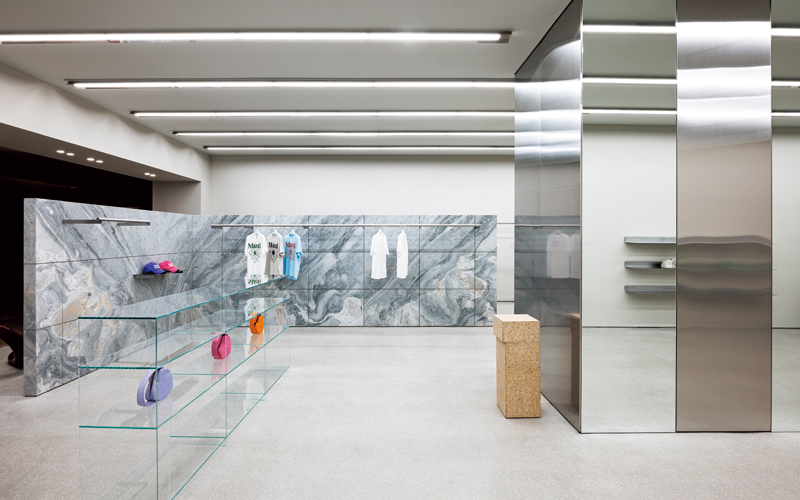
Mardi Mercredi’s store at Lotte World Tower. Known for its French chic casual style, the brand is loved by women in their 20s and 30s for its stylish yet unassuming and comfortable designs.
Courtesy of Creative Studio UNRAVEL; Photo by Sunghoon Han
Most of Korea’s top fashion designers used to follow a similar career trajectory: receiving a formal education, gaining hands-on experience through apprenticeships, then launching their own brand and hoping for international recognition. In recent years, however, that formula has been rewritten.
These days, new designer brands find global fame first and then get their collections placed in Korean showrooms, boosting domestic interest in Korean fashion. These budding designers, whose strengths lie in contemporary designs with universal appeal, are garnering attention in the global market through nontraditional means.
Woo Youngmi and Jung Wook-jun are two of the most distinguished Korean fashion designers. Their high-end brands — Woo Youngmi and JUUN.J — have a long-established and solid international presence. They are inductees into the Fédération de la Haute Couture et de la Mode (FHCM), which organizes Paris Fashion Week. To qualify, designers must be based in Paris and pass a rigorous vetting process by industry experts.
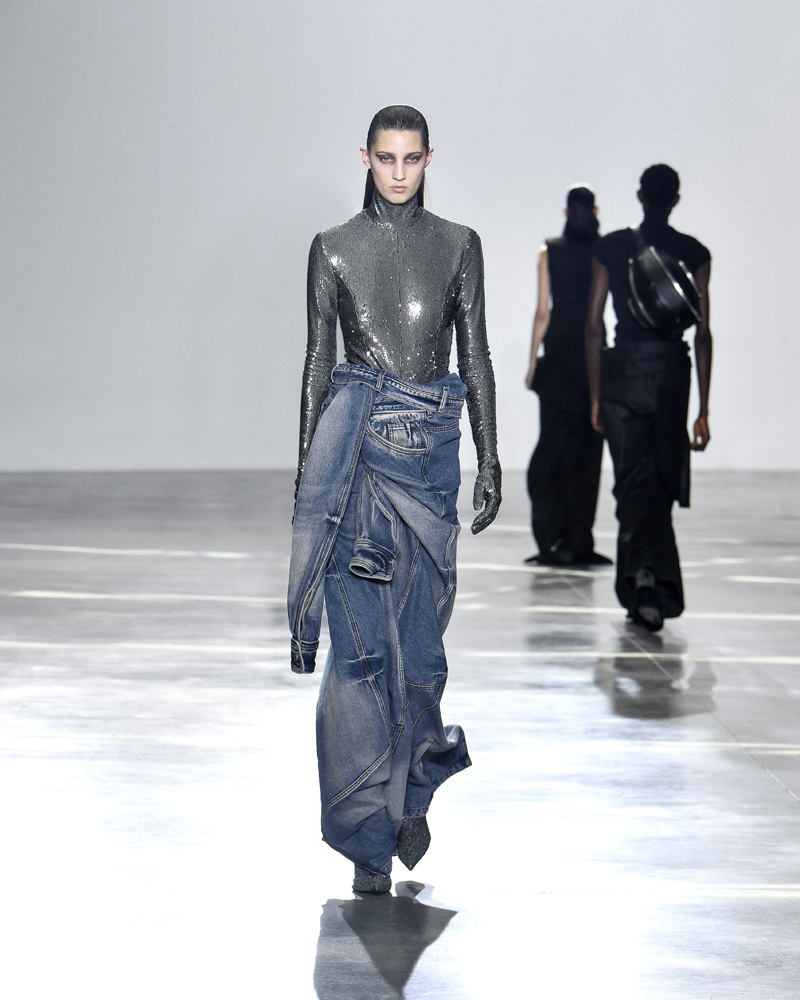
Part of the Spring–Summer 2024 collection held by JUUN.J at the Palais de Tokyo in Paris in June 2023. The contrast in the silhouette was maximized under the theme of “Skin.”
ⓒ JUUN.J
The only other Korean FHCM designer is Kiminte Kimhekim, who founded the brand KIMHĒKIM. Unlike Woo Youngmi, Kiminte Kimhekim does not have a boutique in Paris, nor does his brand have the backing of a large corporation enjoyed by JUUN.J, which belongs to the Samsung C&T Fashion Group. What KIMHĒKIM brings to the table is its social media know-how. The theme of its 2019 Paris collection was “attention seekers,” and the distinctive presentation of models strutting the runway holding IV drips and selfie sticks quickly went viral. With their delicate tailoring, Kiminte Kimhekim’s audacious designs were a visual delight and highly desirable couture pieces. The rise of KIMHĒKIM exemplifies how social media can be a valuable tool for global designers, even if the number of “likes” does not necessarily translate into sales.
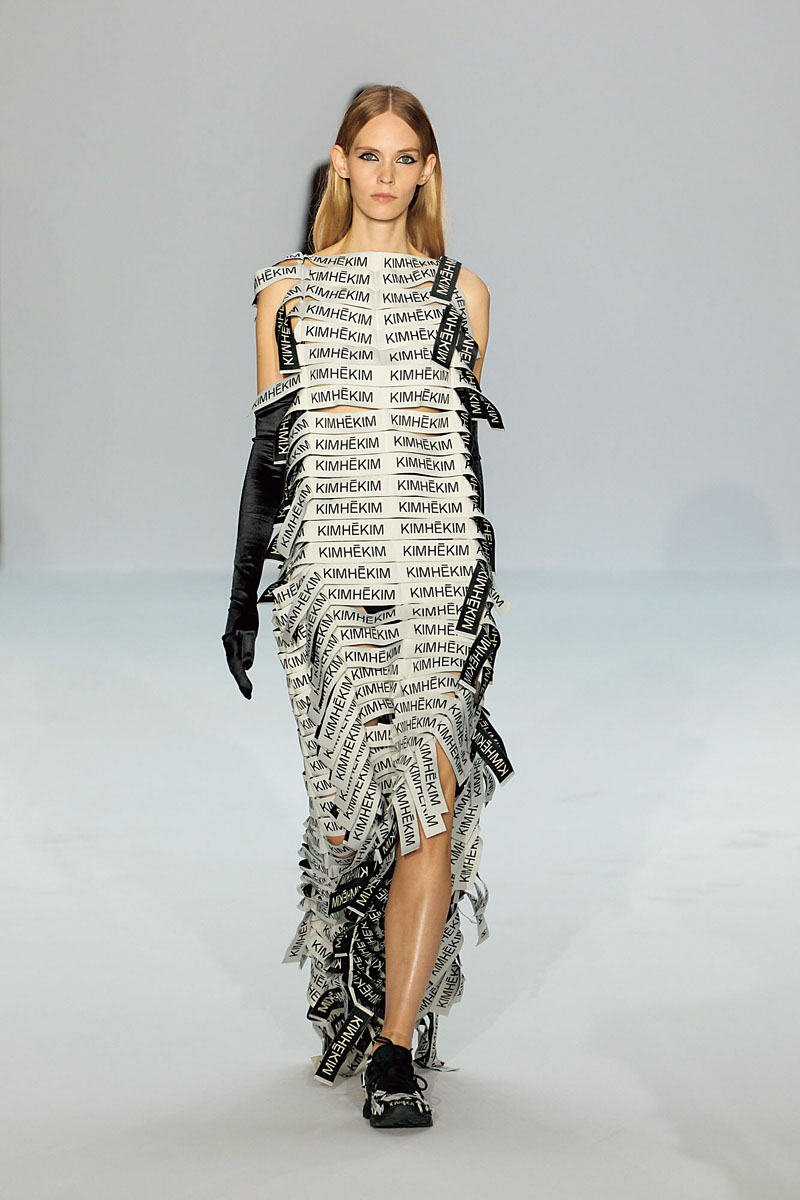
KIMHĒKIM’s Spring–Summer 2024 collection, titled Noir et Blanc, presented at Paris Fashion Week. The brand’s signature style is poetic and simple, exuding feminine, powerful beauty.
ⓒ KIMHĒKIM
GENEALOGY OF K-FASHION
The Korean fashion industry took off in the 1990s, when the Seoul Fashion Artists Association (SFAA) introduced the concept of collections to Korea, elevating the status of designers and laying the foundation for the launch of various industry events, such as Seoul Fashion Week, when they could present their work. This also served as a stepping stone for these designers to advance to renowned fashion shows outside Korea.
In March 1993, now-iconic fashion designers Lee Shin-woo and Lee Young-hee debuted in Paris. While Lee Shin-woo showcased her signature avant-garde designs, Lee Young-hee’s collection received acclaim for including Western-style clothes that incorporated the lines and colors of hanbok, traditional Korean attire. Later that year, Jin Teok, known as the “godmother” of Korea’s fashion world, joined the two in Paris, presenting simple, elegant designs infused with a uniquely Korean sensibility. They were the first generation of Korean fashion designers who introduced collections and paved the way for today’s burgeoning fashion industry.
In the 2000s, domestic fashion brands experienced a slump due to competition from imported labels; cheap, mass-produced wear; and fast fashion brands. Young fashion designers thus needed to find new ways to get noticed.
Traditional methods of promotion, such as catalogues, magazine ads, and fashion shows, can build up a name, but fashion labels can now become famous overnight through mentions by influencers or celebrities. Long-form fashion films that were once meticulously d each season have now been replaced with short videos posted frequently online. This means greater opportunities for designers to promote their label and gain global recognition.
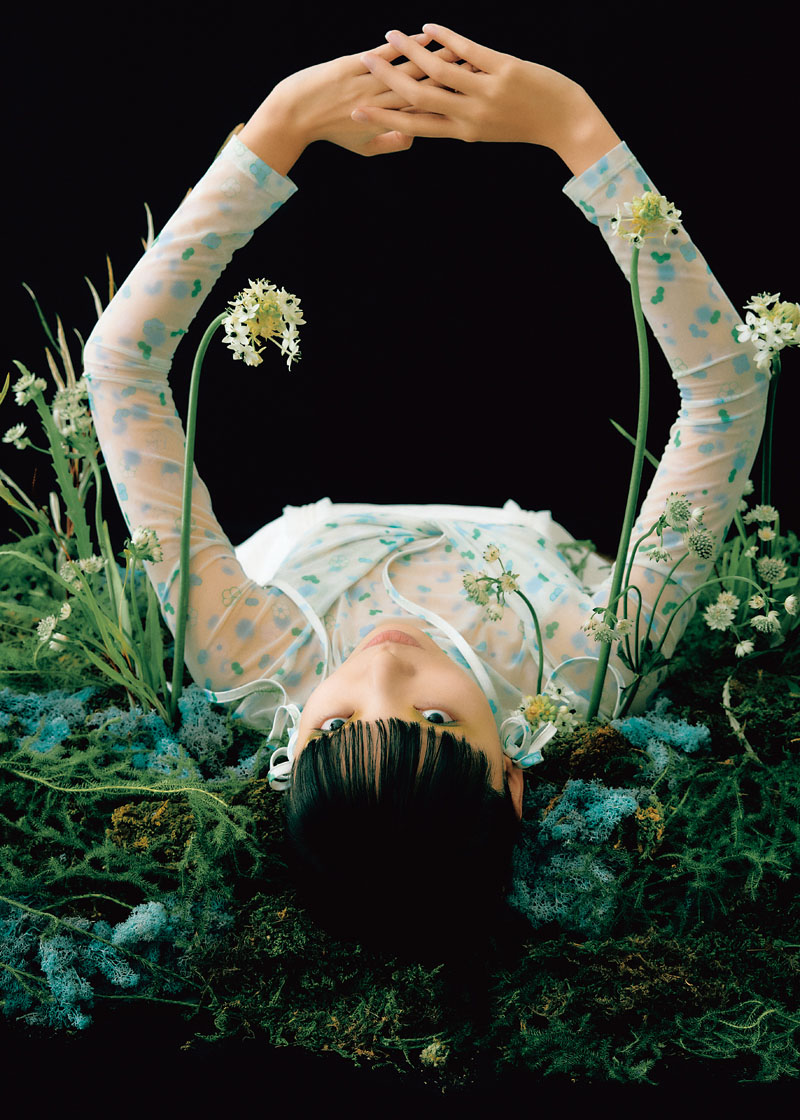
MINJUKIM’s BARI collection in 2022 was inspired by the Korean myth of Princess Bari. The fashion brand's eponymous designer is known for her remarkable ability to translate fairy-tale elements into realistic designs.
ⓒ MINJUKIM
OUT-OF-THE-BOX APPROACHES
Nascent designers may also adopt unconventional means to launch their own label. A prime example is Matin Kim, a brand loved by young people in and outside of Korea for its simple and free-spirited design. Its entry into the fashion world was a Blog Market on NAVER, Korea’s dominant web portal. By interacting closely with its subscribers and customers, the brand built a solid fan base that helped grow its business.
Matin Kim pop-up stores that were held in Tokyo last year and across Japan this year were immensely popular. Building on this success, the brand plans to open new brick-and-mortar stores in other parts of Asia, such as Hong Kong, Macau, and Taiwan, in the second half of the year. It also aims to further strengthen domestic business and brand recognition in order to firmly establish itself in the global market.
Matin Kim, which started online but has also been recognized for its off line competitiveness, recorded sales of 100 billion won (nearly 75 million US dollars) last year and is currently operating 14 stores. Its rapid growth can be attributed to the brand’s strong communication with its target demographic.
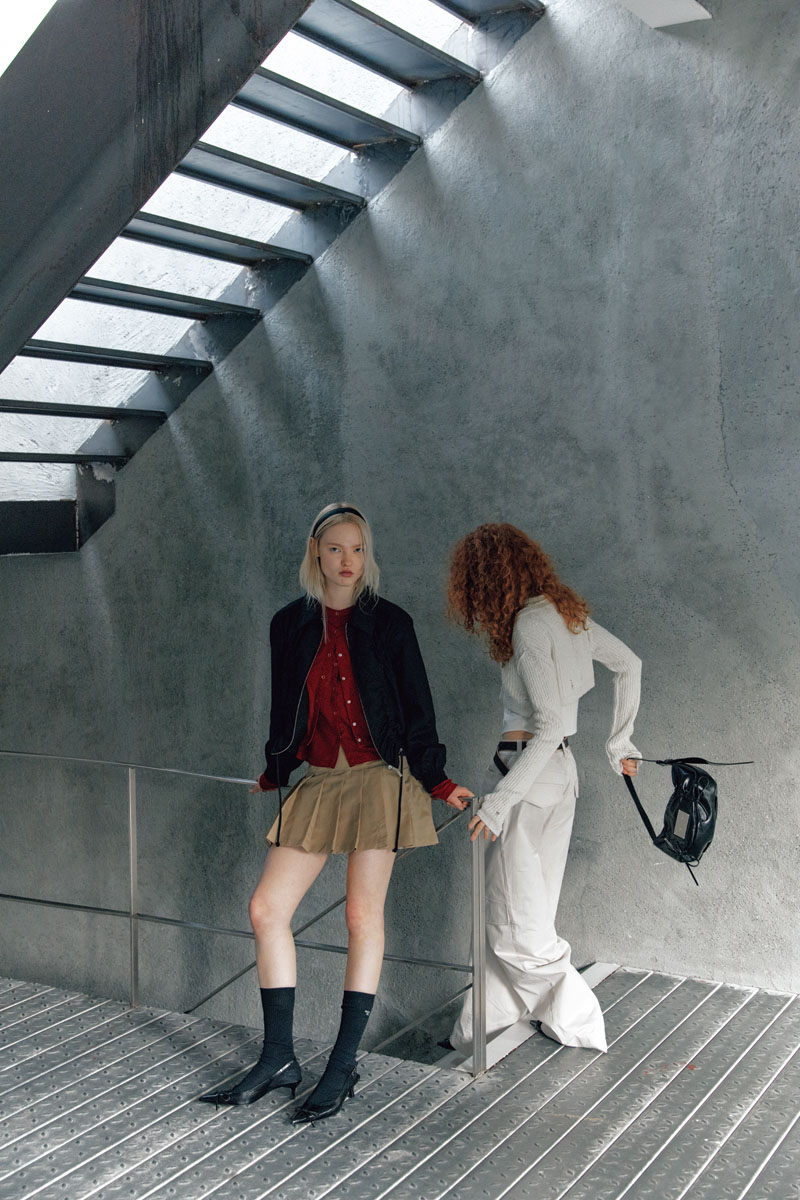
Matin Kim’s Spring 2024 collection ON THE PATH. From the warm rays of the spring sun to the modern movements of the city, moments of everyday life are freely expressed from a variety of perspectives.
ⓒ Matin Kim
THUG CLUB, d by JIYOOL KWON and THUG MIN in 2018, is another thriving brand. The two designers have chosen to break the mold, infusing a freewheeling, carefree sensibility into their fashion. They also work as models and post their photos on social media. In 2021, they launched an underwear collection that featured provocative phrases, drawing an enthusiastic response for the vicarious thrill it offered. After its makeover into a more refined brand, THUG CLUB is now enjoying even greater popularity. Famous musicians at home and abroad have worn and mentioned its clothes, helping to solidify its global presence as a streetwear brand. It is now also collaborating with brands such as MCM and Gentle Monster, exploring even greater possibilities.
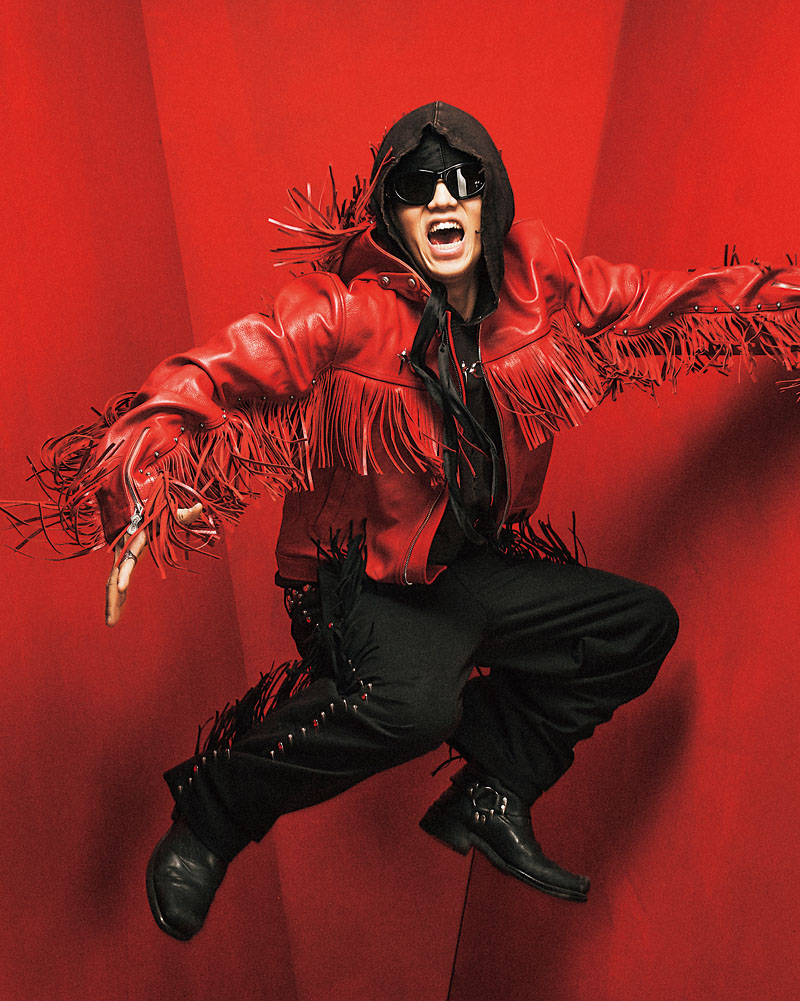
THUG CLUB’s Spring–Summer 2024 collection Hybrid Cowboy is an imaginative reinterpretation of the cowboy culture. The brand is known to new trends, boldly expressing the designers’ ideas and feelings.
ⓒ THUG CLUB
LOYAL FAN BASE
So-called “national t-shirts” have a firm place in the rotating cycle of fashion trends. In recent years, many young women are spotted wearing clothes with a huge daisy flower logo. This is such a common sight that one may wonder if someone handed them out for free. The daisy flower is, in fact, the signature symbol of Mardi Mercredi, a fashion label founded in 2018 by designer couple Park Hwa-mok and Lee Su-hyun. The brand is known for its French chic casual style, befitting its name, which means “Tuesday Wednesday” in French.
The flower was initially intended for only one season but became so wildly popular that it was adopted as the brand’s signature design. Simple yet eye-catching, it was a stroke of genius, but online platforms also played a part in propelling the brand to remarkable success. Today, Mardi Mercredi has opened stores on major online fashion marketplaces, such as MUSINSA and 29CM. They cater to teens and thirtysomethings, and the key to their success is setting price points tailored to this consumer base. After receiving fame online, the brand opened a flagship store in Seoul that usually has a long line of customers, including many foreign tourists. In this sense, Mardi Mercredi’s iconic flower might be called the logo of contemporary Korean fashion.
Whereas in the past, designers followed the tried-and-tested path of growing their brand step by step, rising young designers today capture consumers’ hearts by innovatively embodying the fashion zeitgeist. The industry is burgeoning in a vibrant, diverse landscape that defies a singular definition.